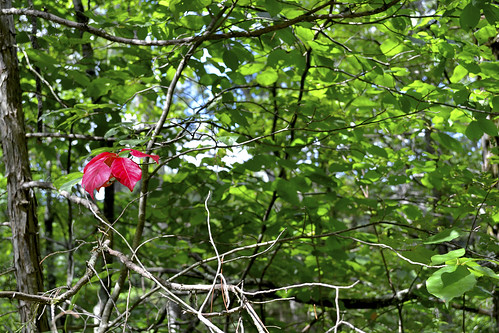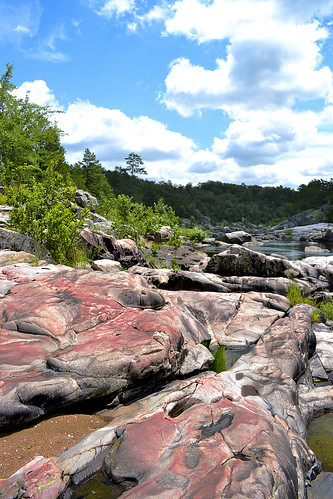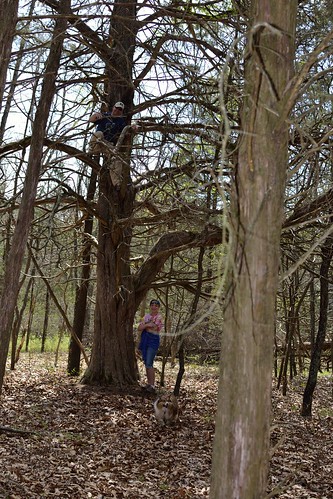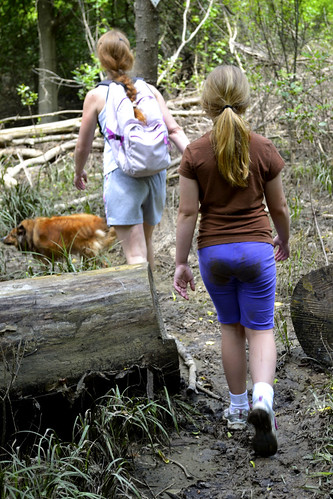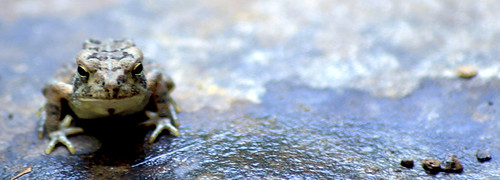Fleetwood Mac had it right, "You Can Go Your Own Way" anytime you like when you're out hiking and you don't need to be a Meriwether Lewis or William Clark either. All you need is a compass, a map and the knowledge of how to use it. Here's a how to on what a compass is, what parts make up the compass and how to put it all together with a map in order to find your way. Fist pumping is advised...
What's this "Twisty Thing"? - The Parts
Let's start of with some compass basics. How about we learn what the different parts of the standard compass are? Here's a quick list of what you'll find on your standard compass.- Baseplate: The baseplate of the compass is the clear, rectangular plate that the compass housing is attached to. It may have a ruler on one or both edges and many items printed on it. Such as the orienting arrow and orienting lines.
- Direction of Travel Arrow: The direction of travel arrow is usually an arrow which is printed on the baseplate. It will point AWAY from the compass housing and magnetic needle.
- Compass Housing: The compass housing is the plastic circle that contains the magnetized compass needle and some type of "mystery" fluid (I don't recommend cracking it open to take a swig of it).
- Degree Dial: The degree dial is a numbered dial that surrounds the compass housing. You can twist this dial 360° around the compass housing. This is also the answer to the question in the heading up there...
- Magnetic Needle: Channel your inner child and spin while holding the compass close to your body and look at it. See that two colored needle that turns as you do? That's the magnetic needle, it will always point to Magnetic North.
- Orienting Arrow: The orienting arrow is the non-magnetic, non-spinning, arrow that lies below the magnetic needle, it is usually printed on the plastic.
- Orienting Lines: Orienting lines are lines which are printed inside of the compass housing and run parallel to the orienting arrow.
How Do I Hold This Thing?
Now that you've familiarized yourself with the parts of the compass, let's talk about how to hold it. Oh, and if you're still spinning in a circle from the magnetic needle definition you can stop, unless your inner child is just having too much fun. Now place your hand, palm up and level, in front of your chest. Next, take the compass and place it in your upturned hand. Boom! That's how you hold it, be sure to keep the compass as level as possible in your hand. If you would like to celebrate with a fist pump, be sure to pump only the compass-less hand.
What's that? You don't want to just hold it in your hand or you want to consult a map? Well, fine then. Take your map and compass, find a nice flat and level location, then lay your map down with your compass on top of it. Once you have it all down you may now fist pump either of your paws in victory.
Now Let's Figure Out Which Direction You're Facing
Look at you, all fist pumping and knowledgeable now! Let's add to your newly found orienteering skills by figuring out which direction you are currently facing.
Local Treks on facebook
USGS Topo Maps
USGS Education: How To Use a Compass
National Geophysical Data Center (NGDC) Homepage
NGDC Declination Calculator
- Hold the compass flat in your hand and look down on the top of the compass housing. The magnetic needle should swing off one way or another, unless you are facing to the north.
- Now, grab the degree dial (you know, the twisty thing...) and turn the dial until the orienting arrow lines up with the magnetic arrow, it should outline it to be a bit more precise.
- Nearly all magnetic arrows are two toned, red and white, line up the red side of the magnetic arrow with the orienting arrow. In fact, if your compass doesn't have a two toned, red and white magnetic arrow, buy one that does. Be sure to check your instructions that come with your compass though, just to be sure.
- Finally, spot your direction of travel arrow, remember it is most likely printed on the baseplate. Follow the line from the backside of the arrow, through the compass housing and take note of where the line intersects the markings on the compass housing. In my photo above the arrow is between the N (North) and W (West), so I am facing Northwest.
- What's that? You want to get a bit more specific? Well, look more closely at your compass housing and see what degree the direction of travel arrow intersects with.
Did You Know There Are Two Types Of North?
Well, there are, at least when it comes to orienteering (that's a fancy term for using a map and compass to navigate). So now you're wondering, what are the two types of North? Wonder no more my fledgling explorer, the two types of North are True North and Magnetic North. Let's discuss each of those a bit more here. True North is constant and never changes, it is always located in the same spot and that is why it is referred to on your map.- True North (may also be referred to as Map North) refers to the point at which all the longitudinal lines meet up on the map, that's up there were Santa lives, at the North Pole. All legitimate maps are similar and have True North at the top of the map. But you see, here's the kicker, the Earth has these little variations in its magnetic field and, based on where you are located, your compass won't point toward True North, it will point to Magnetic North instead.
- Magnetic North does not refer to a static point on your map, like True North does. Magnetic North refers to the location on the Earth where our planet's magnetic filed points down. It will wander about... In fact, during 2005 it was located off or the northwest coast of Greenland and is now drifting away further toward the East, toward Siberia. This is the North that your compass points to. Do you see an issue with that? Well I hope you do, because while the map's True North stays constant, the Magnetic North on your compass is slowly heading toward Russia. The difference that is created between True North and Magnetic North is called Declination.
Well, How Do I Compute The Declination?
I'm glad you asked that grasshopper! We use our maps and look for the UTM Grid, see image below, or you can visit the NGDC Geomagnetic Calculator and have the site compute up the most accurate declination available. I prefer to use the internet site before leaving on my hike and then writing the up-to-date declination on my map. For instance on my USGS Topo Map for Rock Pile Mountain, you'll notice that the declination is noted for 2001, that data is over 13 years old now and could result in me being off in my measurement for declination. If you prefer to use the map (and possibly old data) or if it is all you have available, here's what to do. First find the UTM Grid and Magnetic North Declination figure on your map, to see what it looks like glance at the image below.
Next, find the degree measurement between the line with GN (Grid North) and MN (Magnetic North), that number is the degree of declination, above it is 0½'. Then take note to which side of the star the measurement falls, to the West or East. In the image above it falls to the West of the star (True North), so the declination measurement was 0½ degrees West for my Rock Pile Mountain Wilderness map in 2001. Now, when I ran the location 37.43N by 90.42W (Rock Pile Mountain Coordinates) on the NGDC Geomagnetic Calculator today, I was given a 1 degree West declination, which is double the figure given on the map. That little difference can have me off by feet, yards or more of my destination, depending on how far I am traveling. So please, take my advice and get the most up-to-date measurements from the NGDC Geomagnetic site and write it down on your map.
Finally, here's a little bit more. If Magnetic North is EAST of True North (the star on the UTM) then the local declination is positive. If Magnetic North is WEST of True North then the local declination is negative. Here's the thing, if your declination is positive, you will be SUBTRACTING the declination amount, if it is negative you will be ADDING the declination amount to your compass reading. My example above has Magnetic North to the EAST of True North, so I would be subtracting 0½' degree from my compass reading.
Did you follow all of that? If so, fist pump now. Seriously. That is a lot to take in and you are officially becoming an orienteering powerhouse!
Ok, Now I Have The Declination. What's Next?
Well, it's time to put it all together. For this you'll need your compass, your map of the area, a pencil/pen and your declination measured in degrees.
- Lay your map flat and find your starting point (usually the trail head) and your destination (also referred to as your map bearing).
- Using your starting point and your destination draw a straight line that connects your starting point to your map bearing (destination). You may use the straight edge of your compass baseplate to draw the line. Extend this line all the way through the map borders, this is called your "neat line".
- Be sure you are away from any nearby metal such as keys, belt buckle, cars, fences, Tony Stark (you know, Iron Man), etc., as metal objects may throw off your compass.
- Now, place your compass on the map so that the baseplate is parallel to the line you drew, your neat line. Be sure that your direction of travel arrow is pointing to your map bearing (destination).
- Remove the compass from your map and, with the direction of travel arrow pointing away from you, move your body until your red magnetic needle overlays your orienting arrow. Be sure you are holding the compass flat in front of you.
- If your local declination is positive (an East declination), then you will subtract the declination amount, meaning turn the degree dial clockwise that many degrees. If your local declination is negative (a West declination), then you will add the declination, meaning turn the degree dial counter-clockwise that many degrees.
- Rotate your body until the red magnetic arrow overlays your compass's orienting arrow.
- Follow your compass to your destination, being sure to keep the magnetic arrow over your compass's orienting arrow.
- Be sure to frequently check both your map and your compass as you make your way, it is easy to get off course and you may need to make adjustments as you are hiking.
- Fist pumping along the way is optional, but recommended. If you find yourself sufficiently pumped, making a "Choo! Choo!" sound along with the fist pump is allowed. Friends who are along with you may make a "Chugga, chugga" sound. Why should your friends make the "chugga" sound and not the "choo, choo" sound? Because you, my friend, are the conductor of this train, you blow the horn... Cheers.
Local Treks on facebook
USGS Topo Maps
USGS Education: How To Use a Compass
National Geophysical Data Center (NGDC) Homepage
NGDC Declination Calculator



